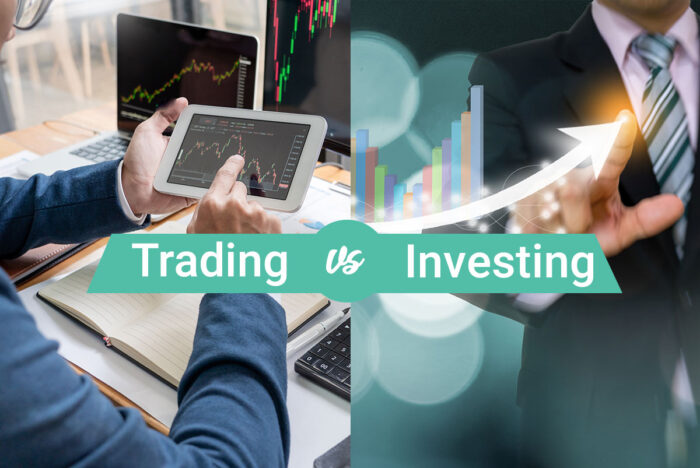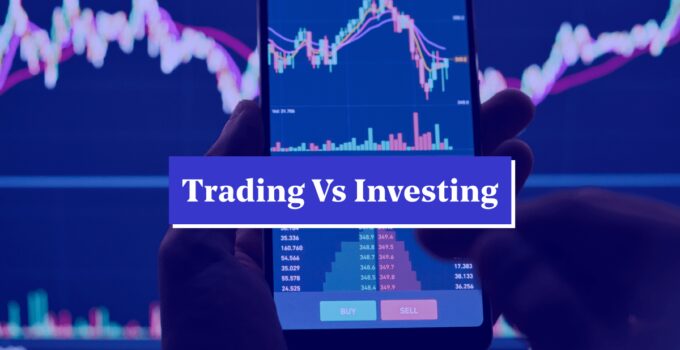Trading and investing are different from each other’s methods of accessing the financial arena. Investing means buying an item whose worth is expected to increase over time, while trading refers to buying and selling stocks, bonds, commodities, currencies, or other financial securities for a short period to earn profits.
Is there a big difference between investing or trading? For people who prefer investing, patiently wait for results. Now the question is, Should one opt for trading?
The most important difference between trading and investing is related to financial objectives.
Understanding Investing

Source: learn.investbamboo.com
Investing is the act of distributing resources into something to generate income or gain profits. It is crucial to understand it in detail:
Long-Term Wealth Building
Investment is a strategy founded on the principles of patient accumulation. Investors adopt this tactic to prepare for long-term investments, such as stocks, bonds, or property. This suggestion exploits the fact that these assets will increase in value slowly over time, allowing for stable and sustainable wealth accumulation.
Fundamental Analysis
Fundamental analysis is one of the most important elements in investment. This way, financial statements, and earnings reports figure into the analysis of a whole company or incorporated asset. Basic investors seek assets with high growth potential and good fundamentals for long-term returns.
Diversification
Investors regularly hire an approach of diversification to mitigate danger and beautify the stability of their portfolios. Diversification involves spreading investments throughout diverse industries, asset classes, and geographic areas. The intent is to ensure that profits in some areas make amends for losses in others, fostering a more balanced and resilient portfolio. Diversification aligns with the time-tested adage of not putting all your eggs in one basket.
Patience As A Virtue
One of the defining traits of a successful trader is their capability to work endurance. Investing is a long-term game and a success. Investors understand that brief-term marketplace fluctuations are a part of the adventure. The area to stay affected throughout marketplace downturns and withstand the urge to make impulsive choices is a trademark of the investor’s mindset.
Environmental, Social, And Governance (ESG) Investing
In recent years, an outstanding subtopic inside investing- ESG investing– has won prominence. This approach integrates environmental, social, and governance criteria into funding decisions.
Investors embracing ESG principles want to align their portfolios with businesses prioritizing sustainability, ethical practices, and responsible governance. ESG investing displays a growing recognition of the impact of agencies on society and the environment, imparting investors an opportunity to assist fine alternatives via their funding alternatives.
Understanding Trading

Source: investopedia.com
Trading means to buy and sell stocks or bonds for another commodity. Let us know more about it:
Short-Term Profit Maximization
In stark contrast to the affected person and consistent method of making an investment, buying and selling is a more dynamic and energetic strategy focused on short-time period earnings maximization. Traders have interacted with the frequent buying and selling of financial gadgets, aiming to capitalize on price fluctuations and market traits within relatively short time frames ranging from minutes to weeks.
Technical Analysis
While buyers lean heavily on essential evaluation, traders regularly depend upon technical analysis to inform their decision-making. Technical analysis entails looking at historical price charts, styles, and signs to expect destiny rate movements.
By reading charts and graphs, buyers can perceive tendencies, guide and resistance tiers, and other patterns that guide their buy and sell decisions. Technical evaluation is a crucial device inside the trader’s toolkit, helping them navigate the intricacies of brief-term market dynamics.
Risk Management
Trading is inherently riskier than investing due to the shorter time frames and the potential for more extensive charge volatility. Successful traders emphasize risk management techniques, along with putting forestall-loss orders to limit ability losses. They also intently monitor their trades, adapting their techniques as marketplace situations evolve. While the capacity for brief income exists in trading, it comes with an inherent trade-off of accelerated risk.
Trading Vs. Investing: Finding The Right Balance

Source: stockbasket.com
Here is the key difference between trading and investing:
Time Horizon And Patience
The desire to choose between investing and trading often hinges on your time horizon and patience. Investing may be the better suit if you have the endurance to climate market fluctuations and an extended-time period aim.
On the other hand, buying and selling is probably more suitable if you experience the fun of active choice-making and can stay centered on short-term market developments. It’s important to align your selected approach with your monetary goals and the time you can commit to monitoring and managing your investments.
Risk Tolerance
Assessing your threat tolerance is paramount in determining the right technique. Investing tends to be much less risky in the end. However, it requires the potential to resist market downturns without panic promoting.
Traders, however, want to be snug with better volatility and potential for fast losses associated with short-term period buying and selling. Understanding your danger tolerance is a key step in choosing the method that aligns together with your economic temperament.
Knowledge And Research
Consider your consolation degree with research and evaluation. Investors discover and know the groups or assets they invest in. Investing might align higher with your interests if you enjoy digging into economic reviews and monetary signs.
Traders must stay abreast of market information, technical signs, and traits to make knowledgeable decisions quickly. The ability to swiftly examine statistics and adapt to converting marketplace situations is vital for hit investors.
Conclusion

Source: experian.com
In the dynamic global of finance, each making an investment and trading has their location. The key lies in aligning your financial goals, threat tolerance, and time commitment with the approach that fits you fine. Whether you choose investing or trading, consider successful financial control adaptability, and keen expertise of your own monetary objectives.
Ultimately, the proper technique is the only one that aligns together with your precise economic situation and private alternatives, placing the sensitive balance between danger and praise.


